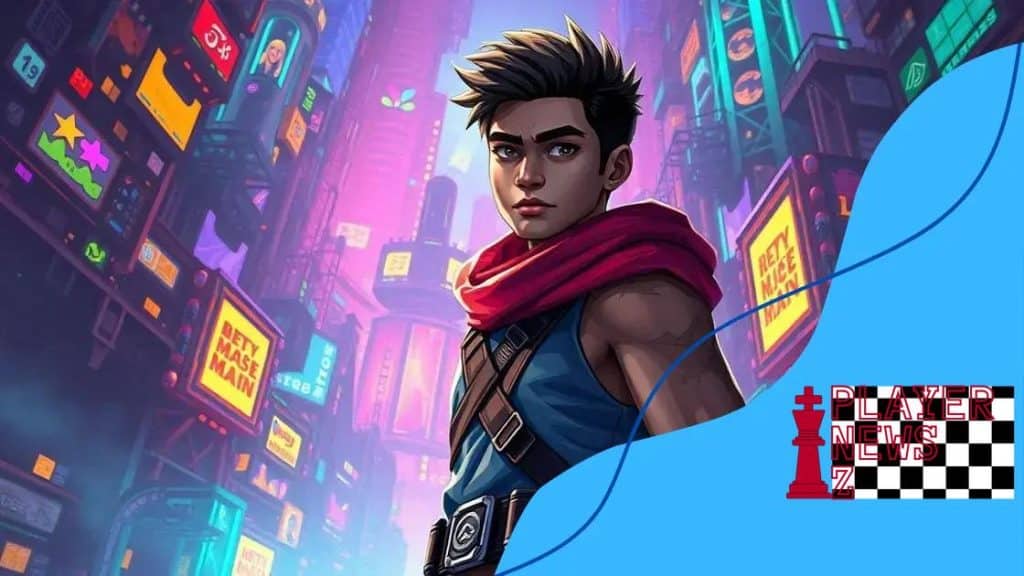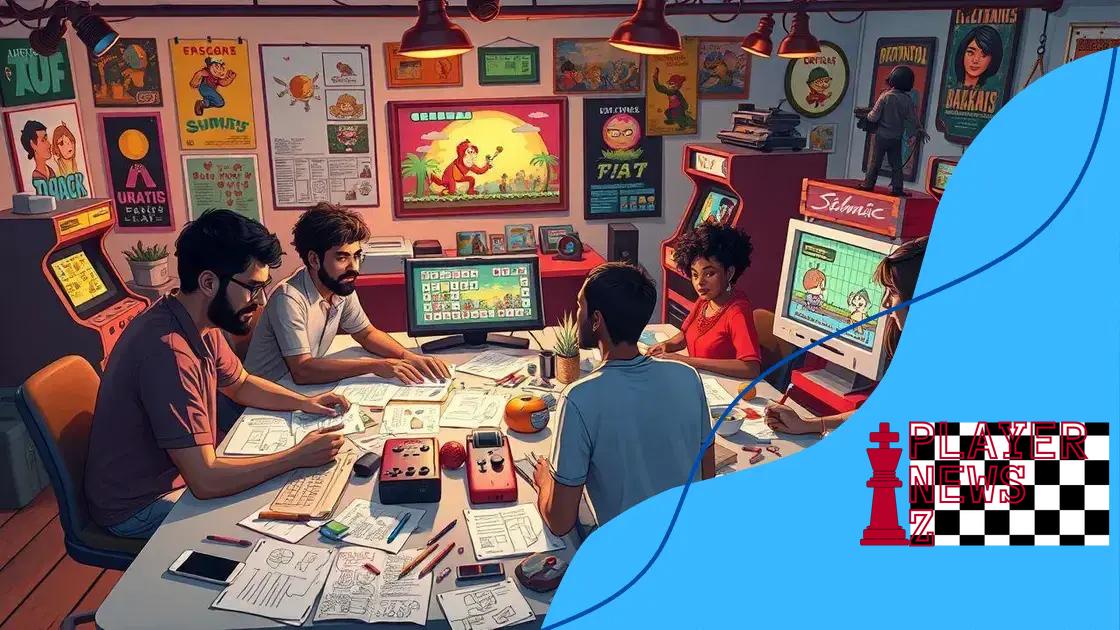The influence of 8-bit and 16-bit graphics on modern games

The influence of 8-bit and 16-bit graphics on modern games is significant, merging nostalgic aesthetics with innovative technology to create engaging and immersive experiences for a diverse audience.
The influence of 8-bit and 16-bit graphics on modern games can be seen in various aspects, from design choices to gameplay mechanics. Have you noticed how these retro styles evoke nostalgia? In this article, we’ll dive into this fascinating topic.
Understanding the basics of 8-bit and 16-bit graphics
When we think about video games, 8-bit and 16-bit graphics often come to mind first. These graphics define an era in gaming, characterized by their pixelated designs and simple color palettes. Understanding the basics of these graphics helps us appreciate their lasting influence.
What are 8-bit graphics?
8-bit graphics refer to a style that uses a limited color palette and low resolution. Each graphic consists of squares or pixels, which form images. Games that used this style often had vibrant colors, but due to the technical constraints, the designs were simplistic.
Characteristics of 8-bit graphics
- Limited color palette, usually up to 256 colors.
- Resolution of 256×224 pixels or similar.
- Blocky character designs that bring out a unique charm.
These characteristics made 8-bit graphics iconic. When you play classic games, like those on the Nintendo Entertainment System, you see how these visuals evoke a sense of nostalgia.
What are 16-bit graphics?
16-bit graphics evolved from the 8-bit era, introducing more colors and improving graphical fidelity. This allowed for more complex designs and smoother animations. Games like Super Nintendo showcased stunning visuals at that time.
Characteristics of 16-bit graphics
- Richer color representation with up to 65,536 colors.
- Higher resolution, typically around 320×240 pixels.
- Smoother animations and more detailed backgrounds.
The advancements in 16-bit graphics provided a significant leap, influencing game design in profound ways. Many modern games draw inspiration from this era, merging nostalgic designs with current technology.
The transition from 8-bit to 16-bit graphics marked a pivotal moment in gaming history. These styles, while rooted in technical limitations, paved the way for the intricate designs we see today. Even as technology has advanced, the charm of pixel art continues to inspire developers and gamers alike.
Nostalgia and its role in modern gaming
Nostalgia plays a powerful role in modern gaming. Many players enjoy returning to the experiences of their youth, and game developers have tapped into this sentiment. By incorporating elements from past generations, they evoke feelings of warmth and familiarity.
The power of nostalgia
When players encounter graphics and sounds reminiscent of 8-bit and 16-bit games, it sparks a sense of nostalgia. This emotional connection encourages thoughtful engagement, as players remember their earlier gaming experiences. Many gamers appreciate the charm of retro aesthetics, which remind them of simpler times.
Examples of nostalgic game design
- Modern titles like Shovel Knight combine retro graphics with innovative gameplay.
- Pixel art styles are frequently used to bring back the look of classic arcade games.
- Reboots and remasters of beloved classics showcase updated graphics while preserving original gameplay.
Incorporating elements from the past is not just a trend; it’s a strategy that resonates with both older and younger generations. Developers create new games that feel familiar, blending new mechanics with retro charm. This fusion attracts a wider audience while providing nostalgia for seasoned players.
The impact on game communities
The nostalgia factor enriches gaming communities. Fans often gather online to discuss retro games and share their experiences. This discussion fosters a sense of belonging and encourages collaboration between players and developers. As these games celebrate their heritage, they contribute to vibrant communities.
As players engage with trailers, gameplay videos, and retro-inspired merchandise, they deepen their connection to these games. The nostalgia surrounding these titles influences purchasing decisions, leading to a growing market for retro-themed games. This is evident in the popularity of crowdfunding for nostalgic game projects that capture the spirit of earlier eras.
Cultural impact of retro graphics on game design

The cultural impact of retro graphics on game design is profound and continues to influence modern developers. As technology improves, many game creators revisit past styles to create immersive experiences that resonate with players.
Revival of pixel art
Pixel art has become a popular choice for many indie developers. This resurgence is a nod to the past, where 8-bit and 16-bit graphics defined an entire generation of gaming. Retro graphics appeal to gamers’ sense of nostalgia while allowing developers to express creativity through limited visuals.
How retro graphics shape modern aesthetics
- Modern games often borrow color palettes and character designs from retro sources.
- Creative limitations of earlier technology inspire innovative gameplay mechanics.
- Development of retro-inspired games helps new audiences appreciate gaming history.
Developers blend nostalgia with contemporary designs to create unique visuals. This approach not only engages older players but also introduces younger generations to the charm of the past. Games like Celeste and Undertale showcase how retro styles can convey deep emotional stories while maintaining engaging gameplay.
Community involvement in retro aesthetics
As players embrace these visual styles, they contribute to a larger cultural narrative. Online forums and fan communities celebrate retro graphics, sharing fan art and creating discussions around favorite games. This engagement motivates developers to preserve classic aesthetics while innovating.
This blending of past influences and modern technology helps shape the future of game design. As the industry evolves, the legacy of retro graphics remains influential, encouraging a diverse array of creative expressions. Players and developers alike appreciate the nostalgia while pushing the boundaries of what’s possible in gaming.
How modern games incorporate retro aesthetics
Many modern games successfully incorporate retro aesthetics to engage players. As technology advances, developers seek to create experiences that resonate with both nostalgia and contemporary design. By blending old and new styles, games appeal to a wide audience.
Blend of old and new
Retro-inspired graphics often use pixel art, reminding players of classic games. This approach creates a unique charm while making gameplay accessible. Titles like Stardew Valley and Octopath Traveler showcase this blend, combining familiar visuals with modern gameplay mechanics.
Reviving classic mechanics
- Modern games often feature turn-based combat, a staple in retro games.
- Platformers utilize simple controls reminiscent of older designs.
- Exploration elements reflect the freedom found in classic adventure titles.
The incorporation of these mechanics helps players feel connected to their favorite childhood games. This feeling can enhance their overall gaming experience and encourage longer play sessions.
Sound design and music
Soundtracks also play a significant role in creating a nostalgic atmosphere. Developers often opt for chiptune music styles, reminiscent of the 8-bit and 16-bit eras. These catchy tunes evoke memories and emotions, adding to the overall appeal.
Additionally, sound effects that mimic the retro style enhance gameplay. For example, jumping sound effects and collectible noises bring back familiar sensations from the past. This careful attention to detail elevates the gaming experience for players.
By using retro aesthetics, modern games create a bridge between generations. Players not only enjoy the nostalgic visuals and sounds, but they also appreciate the innovative ideas brought forth by contemporary game design. The combination of these elements fosters a sense of belonging in the gaming world.
Future trends: merging old styles with new technology
The future trends in gaming focus on merging old styles with new technology. Developers are increasingly combining classic aesthetics with modern advancements to create unique experiences. This approach not only appeals to nostalgic gamers but also attracts new audiences discovering retro styles.
Innovative gameplay mechanics
As technology evolves, game mechanics improve significantly. Developers take inspiration from classic games, infusing modern elements like virtual reality (VR) or augmented reality (AR). These innovations allow players to interact with retro environments in exciting new ways, creating immersive experiences.
Visual enhancements using new tools
- Pixel art can be combined with advanced graphic engines to produce stunning visuals.
- Tools like shaders and advanced lighting techniques bring depth to traditional styles.
- 3D modeling can be blended with retro designs, offering new perspectives.
The combination of pixel aesthetics with cutting-edge technology fosters creativity in game design. Developers can craft worlds that resonate with nostalgia while providing players with visually captivating experiences. Innovative titles, such as Hollow Knight and Hyper Light Drifter, exemplify this trend by utilizing vibrant graphics alongside traditional gameplay.
Emphasis on community engagement
As games evolve, community feedback becomes increasingly vital. Developers often involve players in the design process, asking for opinions on aesthetic choices and gameplay features. This interaction helps ensure the final product captures the essence of both classic and contemporary gaming.
Moreover, communities actively celebrate retro styles. Online platforms allow players to share their experiences and artwork, further enriching the cultural landscape of gaming. The excitement around these interactions fuels interest in games that merge old and new, setting the stage for groundbreaking developments.
As the gaming industry pushes forward, we can expect to see more fusion of old and new styles. The blend of classic nostalgia with state-of-the-art technology will shape the next generation of gaming experiences, creating opportunities for creativity that engage diverse audiences.
FAQ – Common Questions About Retro Graphics and Modern Gaming
How do modern games use retro aesthetics?
Modern games incorporate retro aesthetics by blending classic pixel art styles with advanced technology, creating a nostalgic yet fresh gaming experience.
What role does nostalgia play in game design?
Nostalgia plays a significant role by connecting players emotionally to their past, influencing their engagement and enjoyment of contemporary games.
Are there benefits to merging old styles with new technology?
Yes, merging old styles with new technology allows for innovative gameplay and visually captivating experiences that appeal to a wider range of players.
How can player feedback shape game development?
Player feedback is crucial as it helps developers understand player preferences and improve game design, ensuring that both nostalgic and modern elements resonate with audiences.





